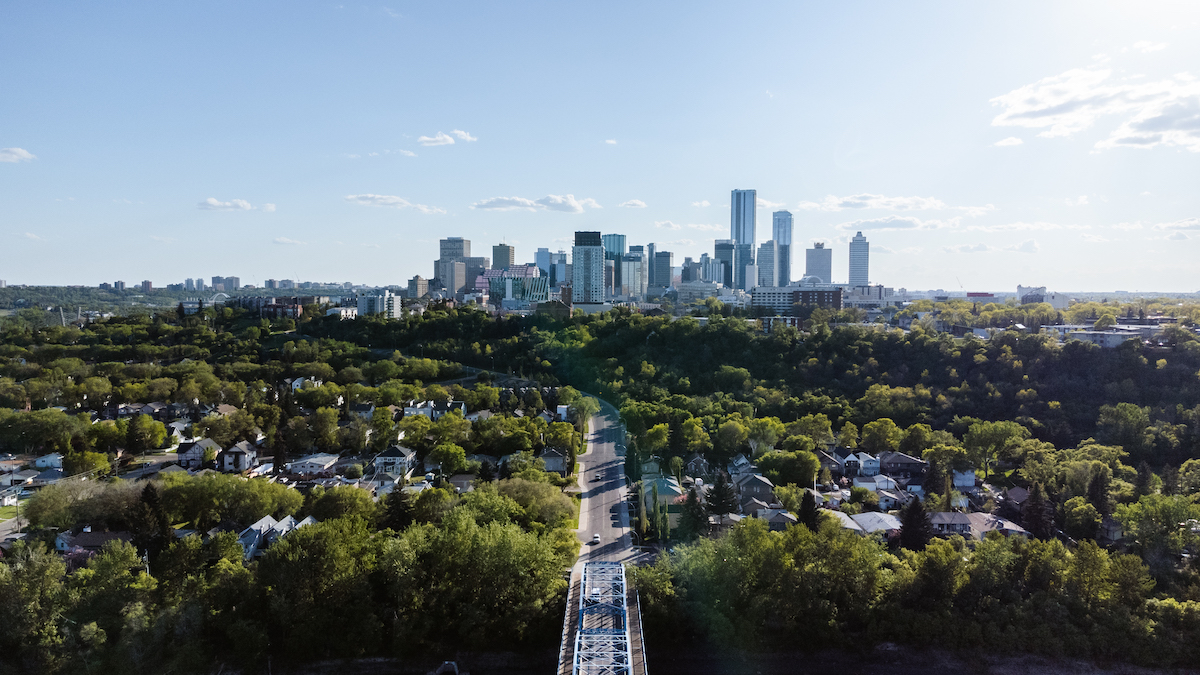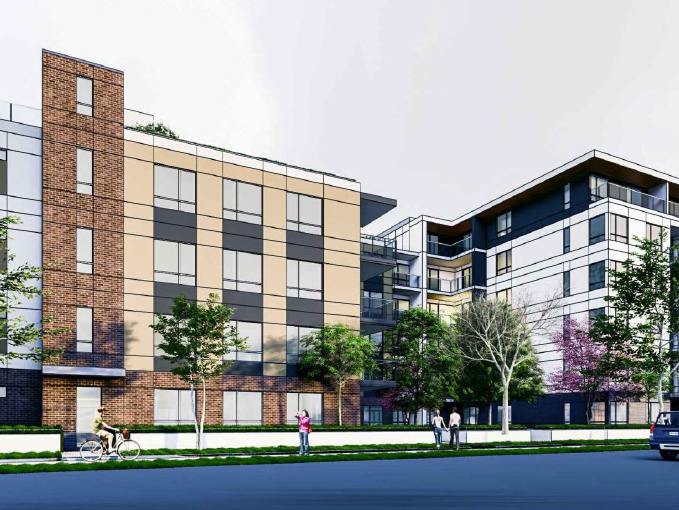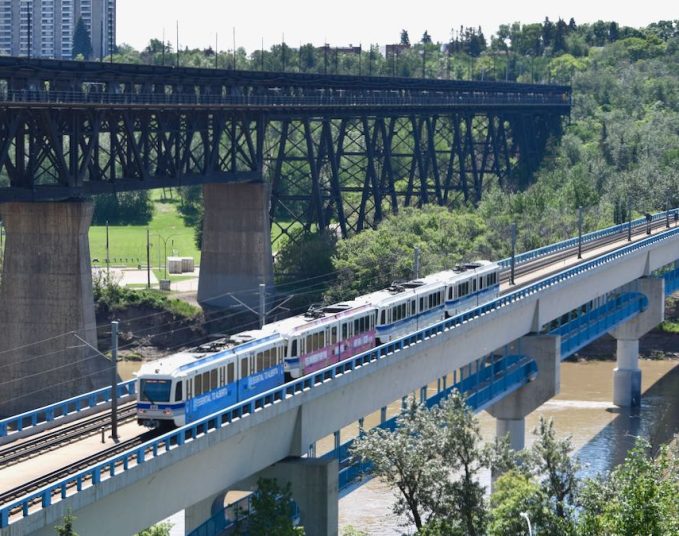Brad Armstrong is a Registered Professional Planner and Vice President for Qualico Communities. Leo Broks is a Professional Engineer and Founder of Al-Terra Engineering. Jodie Wacko is a Registered Professional Planner and Chief Operating Officer for Cantiro.
Earlier this year, the Urban Development Institute identified a top advocacy priority for community building in the Edmonton metropolitan region – to curb public infrastructure sprawl. This term raised some eyebrows, with many asking, “What exactly is public sprawl?”
Public sprawl refers to the ever-growing financial, physical and design-related requirements for public infrastructure in the development of new communities and the redevelopment of existing ones. While investments in roads, paths, pipes, ponds, parks, lights and laneways are critical to well-functioning neighbourhoods, excessive and out-of-date requirements contribute to the shape our communities take and directly impact the cost of new homes.
This pattern of development also drives up the maintenance and repair costs for municipalities overall which negatively affects property taxes over time – after all, unnecessarily wide roadways to plow in the winter means more trucks, salt, storage and human labour year-round. The over-engineering of our public realm also runs contrary to efficient design principles and conflicts with stated climate change goals as more public lands are consumed unnecessarily.
Despite increased densification pressures and better private sector land efficiency realized in recent decades, there has been a marked tendency for communities and utility providers to seek more elaborate and land-consumptive public infrastructure. Whether this is about managing risk or a resistance to innovate, the outcome is the same – increasingly space-efficient privately-owned sites flanked by expanding public ones. If we genuinely want to become more sustainable, we need to ask ourselves how we can continue to meet the needs of residents without defaulting to continuously adding more, of everything, everywhere — all at once. The focus for the public, including its agencies and utilities, should be to plan, design and invest in smarter and more practical ways — saving space and costs for homeowners and taxpayers.
The real estate industry is responsible for developing and servicing land by building the water and wastewater networks, constructing the streets and sidewalk, installing shallow utilities and setting aside land for new amenities like parks and schools to support complete communities. Over the years, the real estate development industry has stewarded land efficiently and has evolved their practices to meet shifting regulatory requirements and changing market demands. For example, while many new neighbourhoods are built today to achieve a density of 45 units per net residential hectare as the baseline expectation, mature communities across the region are often half as dense, by design. This transition to better land use efficiency and diversity by industry represents immense value for new homebuyers in our city. However, a similar shift has not occurred for public infrastructure.
So… where to go from here? Here are three ideas to adopt a different mindset.
1. Be strategic
The ideas that emerge from municipalities and the stakeholders within them are often well-intentioned. We have a shared goal of creating vibrant communities and cities we can all be proud of. However, when we add up the costs and the physical footprint associated with all these growing aspirations, how does that impact the development of great places? And how has our thinking around what defines great spaces changed over time?
Is it reasonable to have ever growing public road rights-of-way flanking smaller private lots, or maintaining the same large pipe sizes as water consumption plummets thanks to accelerating efficiency? The wise use of space, energy and resources has never been more important. We need to be collectively disciplined in our city building approach and the decisions we make. The development industry cannot build all the infrastructure and communities at once, so choices and trade-offs need to be made.
Municipalities can play a key role here. One concrete way to do so is by carefully thinking through how their own public land requirements can be scaled back to reduce environmental and fiscal impacts.
2. Review requirements
Do the municipal requirements passed on to the private sector relate directly to safety and the public good, or are they based on older assumptions that are no longer valid?
The real estate industry has had to become more creative and adaptive over time by building more compact neighbourhoods and stewarding different types of development to meet the needs of increasingly diverse users. At the same time, the public realm continues to expand and becomes more and more expensive to build, operate and maintain. Even the smallest of policy changes or shifts in engineering standards can impact homebuyers in big ways. The cumulative impact of many such changes is even more troubling, particularly when it comes to the effect this has on pushing our city to grow outward more quickly than it needs to, because public land management is not keeping pace with the times.
Design standards and guidelines imposed by regulators should be reviewed regularly for alignment with overarching community goals to ensure efficiency of land and resources. They need to add clear value and should be structured to stimulate, not stunt, ongoing investment and support thriving communities. The private costs associated with public policy changes should be understood and accounted for up front, rather than externalized to homebuyers or waved-away.
3. Maintain our affordability advantage
While many municipal planning concepts have merit and create positive changes — like evolved stormwater management and environmental protection — some ideas have in fact slowed down development and added unnecessary costs to the end-user.
For example, growing road rights-of-way and laneways to accommodate the turning radius of ever-larger service vehicles like garbage and fire trucks can and should be reconsidered. We cannot lose sight of the costs this adds to the individual homebuyer, and the importance of the Edmonton region’s affordability as a big Canadian metro area overall. And over the past 50 years, these increasing infrastructure costs have been shifted to the developer and, ultimately, the homebuyer, influencing the ability for individuals and families to attain the kind of homes they are looking for in the locations they desire.
The industry is aligned in the public sector’s goal of creating housing attainability and choice — as this means that current and future residents can find a home that is suitable to their needs when and where they need it. What needs to be watched carefully, though, are the unintended impacts on this affordability through the application of a growing number of requirements without the discipline to remove older ideas as new ones are added.
The land in our region is finite, and so is people’s ability to afford it. We need to be strategic in how we build on private and public lands so that we can develop livable and welcoming communities and cities. With up to 40 per cent of the land in new neighbourhoods dedicated directly to cities for public purposes, we can nearly double our collective environmental, social and economic impact if public land management meets private sector innovation and efficiency. With a stated goal to welcome a million more residents to Edmonton through a balance of greenfield and infill development, we all have a role to play in advocating for better community building that enables a broad diversity of choice, maintains our affordability advantage and actively attracts talent and investment to our region.
Our call to action is to take this on, deliberately and together. Community-building is a joint endeavor. We are excited to dig into the possibilities and lead the country as we welcome Canadians home.
This content was supplied by the advertiser for commercial purposes. It is not written by and does not necessarily reflect the views of Urban Affairs staff.
Savvy AF. Blunt AF. Edmonton AF.





